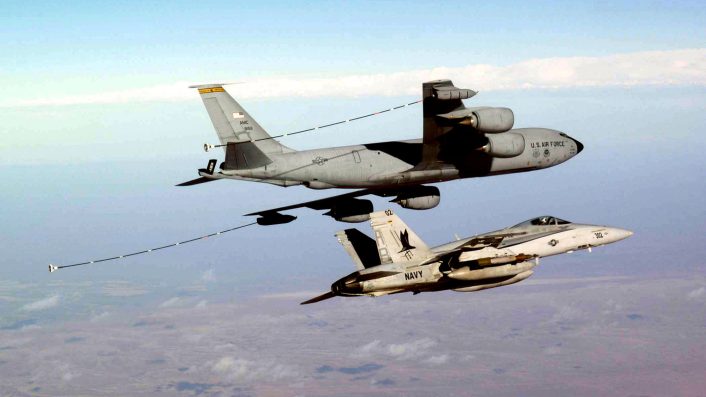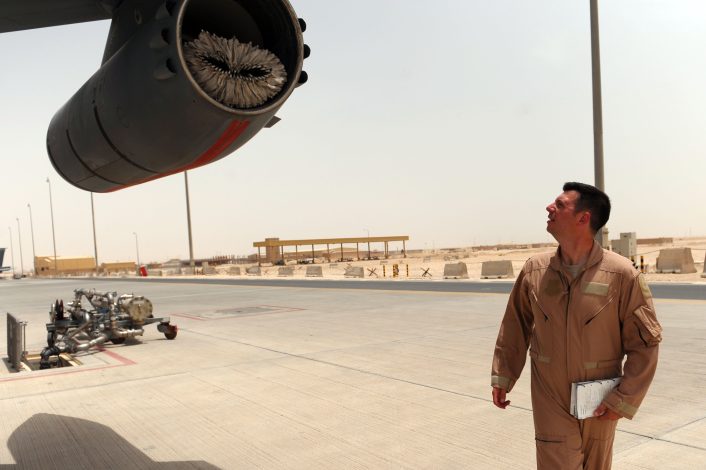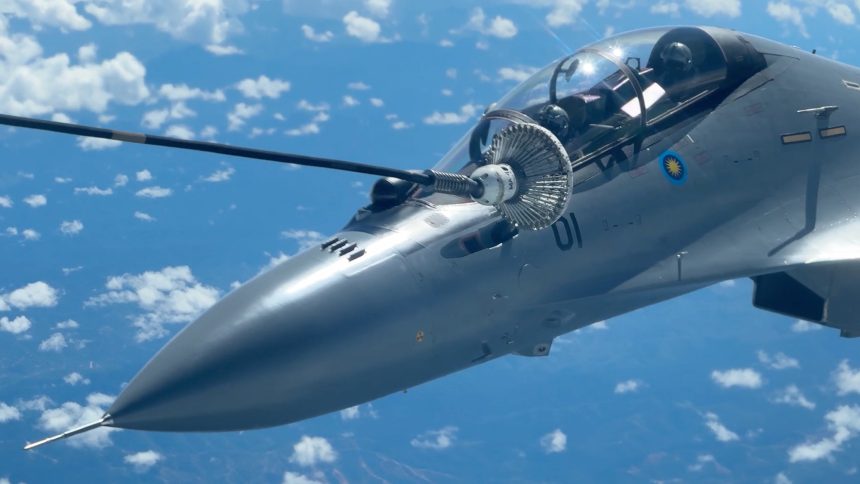This marks the first publicly acknowledged instance of a U.S. Air Force KC-135 tanker refueling a Russian-made Su-30MKM aircraft.
A KC-135 Stratotanker assigned to the 141st Air Refueling Wing, Washington Air National Guard (homebased at Fairchild Air Force Base, Washington), refueled three Russian made Sukhoi Su-30MKM aircraft during a historic State Partnership engagement with the Royal Malaysian Air Force at RMAF Subang Air Base, Malaysia, on Nov. 12, 2024.
While it was probably the very first time a U.S. Air Force KC-135 refueled a Russian-made jet, a French Air Force KC-135R conducted similar operations with Indian Air Force Su-30MKI in 2019.
According to the U.S. Air Force, “since 2017, the Washington Air National Guard has maintained a strong partnership with Malaysia, improving interoperability and integrated capabilities. Engagements like this reinforce initiatives led by our allies and partners, projecting strength by utilizing both distinctive U.S. capabilities and those shared with allies and partners. Together, these efforts leverage cultural, strategic, and operational advantages that are essential to our shared objectives in the Indo-Pacific region.”
The aircrew aboard the KC-135 used the multi-point refueling systems (MPRS) to refuel the Malaysian Sukhois: unlike the U.S. Air Force aircraft, that are usually equipped with a receptacle suitable for AAR (Air-to-Air Refueling) using a flying boom, the Su-30s, as well as U.S. Navy, U.S. Marine Corps and allied aircraft, are in fact equipped with an IFR (In-Flight Refueling) probe that requires the so-called hose and drogue system.
Malaysia was among the pioneer Southeast Asian users of Russian fighter jets, having procured 18 MiG-29N Fulcrum in 1995, followed by 18 Su-30MKM in 2007.
The aged MiG-29N were decommissioned from the RMAF in 2015, whereas there are plans to keep the Su-30MKM multirole aircraft in service until 2035. These rare Su-30s often integrate with U.S. and NATO aircraft during joint drills conducted in the Indo-Pacific region.
MPRS (Multi-Point Refueling Systems)
With MPRS, Air Force tankers have the versatility to refuel Air Force, Navy and coalition aircraft all in the same mission, with external wing-mounted pods to conduct drogue air refueling, while still maintaining boom air refueling capability.
This dual refueling capability was developed starting in 1994 and was extensively used in combat during Operation Iraqi Freedom about 10 years later.
While the KC-135 was originally designed for boom refueling, it can also perform drogue refueling by using a boom-drogue adapter (BDA), which is installed on the flight boom before flight. However, when the BDA is in place, the tanker is limited to drogue refueling only for that mission, with the ability to refuel just one aircraft at a time. Single point tankers are not the best option for mission planners since the relatively poor on-load rates of many aircraft cause AAR operations to be quite lengthy.

The MPRS, however, provides two drogue refueling points on the KC-135’s wingtips without affecting the central boom’s functionality, allowing the aircraft to conduct both boom and drogue refueling on the same mission (although the two systems can’t be operated at the same time – the aircraft uses either its central flight boom or the two hose-and-drogue stations). For missions focused exclusively on drogue refueling, the BDA can be installed to improve system reliability and serve as a backup in case the MPRS fails. Additionally, the MPRS enables simultaneous refueling of two aircraft, as long as their combined wingspan does not exceed 68 feet.
The ability to refuel two aircraft at once is one of the MPRS’s greatest advantages. Typically, drogue-refueled aircraft are small fighter-type planes that require less fuel but need rapid refueling for a large number of aircraft within a short time frame. This need is also present for boom-refueled fighters, but drogue refueling poses a greater challenge due to its lower refueling rate. While boom refueling can exceed 6,000 pounds per minute (ppm), drogue refueling is about half that rate, providing 2,800 ppm with a BDA and 2,680 ppm with the MPRS drogue.

An article about the MPRS published on AFCENT page in 2011 said:
Because most customers in the continental United States are boom refueling compatible only, most stateside tanker aircrew are not certified on MPRS refueling.
“Only a limited number of crews here can fly a MPRS-designated mission,” said Capt. Dolan. “The demand from the United States to be trained on MPRS is not the same as overseas. It’s necessary overseas due to the large amount of NATO partners we routinely support in Europe and in the AOR.”
Certified MPRS crews are in short supply and are in constant rotation.
“The people who are certified on MPRS make up only 10 percent of the available aircrews on staff,” said Capt. Richard Winfrey, 340th EARS scheduler. “We have at least one MPRS line flying every shift.”
Flying gas stations cater not only to the traditional method of using a boom to offload gas, but also MPRS to refuel U.S. Navy and Marine Corps and NATO aircraft. To date, KC-135 Stratotankers and KC-10 Extenders cover refueling for Operations Enduring Freedom, New Dawn and Odyssey Dawn as well as other overseas contingency operations in the area of responsibility.









